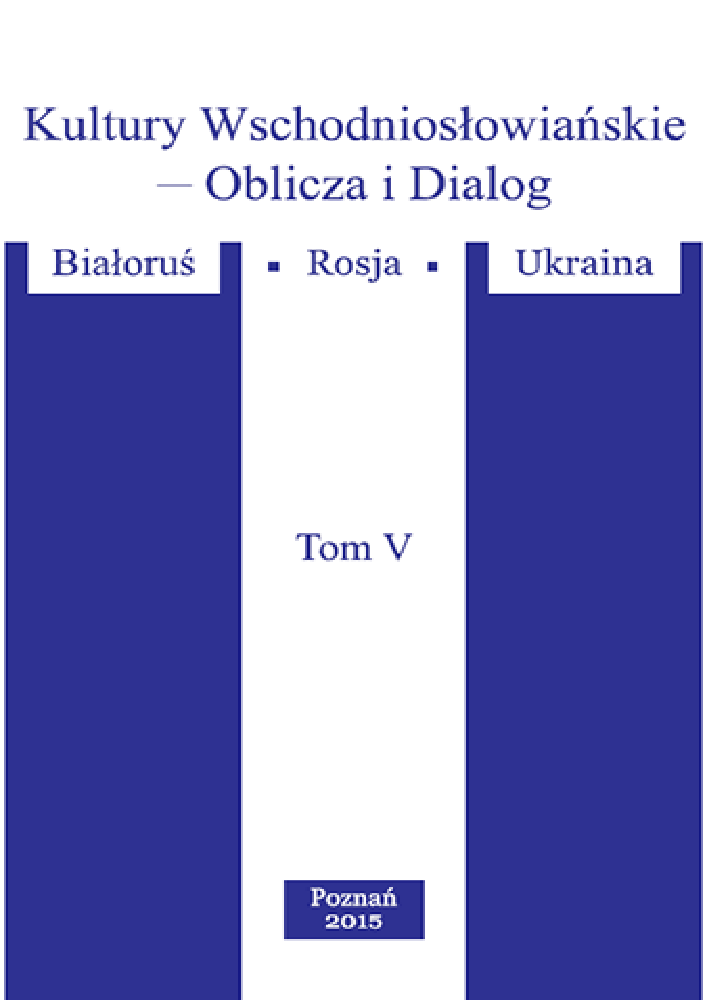Abstrakt
The subject of analysis in this paper is the motif of loneliness in the early works of Irène Némirovsky (1903–1942). A pessimistic view on human life, which is typical for Némirovsky, is shown by the author of this article on the example of three works: L’Enfant génial, David Golder and Les Mouches d’automne. The main character of each of the works constantly feels misunderstood, alienated and eventually dies, convinced of the meaninglessness of his/her existence. These feelings become common for the characters, which at first glance seem completely different - a Jewish boy from the poor quarter of Odessa, a rich financier living in Paris, and an elderly Russian nanny, who emigrates with her masters. The problem of loneliness in Némirovsky’s writing is closely related to the issues of finding one’s own identity and attempts to overcome the past.
Bibliografia
Balaban Alina. Obraz emigranta v tvorchestve Iren Nemirovski i problema natsional'noy samoidentifikatsii. Web. 27.01.2019. https://cyberleninka.ru/article/v/obraz-emigranta-v-tvorchestve-iren-nemirovski-i-problema-natsionalnoy-samoidentifikatsii
[Балабан Алина. Образ эмигранта в творчестве Ирен Немировски и проблема национальной самоидентификации. Web. 27.01.2019. https://cyberleninka.ru/article/v/obraz-emigranta-v-tvorchestve-iren-nemirovski-i-problema-natsionalnoy-samoidentifikatsii]
Balaban Alina, „Roman Iren Nemirovski Delo Kurilova: na styke kul'tur i zhanrov”. Vestnik Nizhegorodskogo universiteta im. N.I. Lobachevskogo 2 (3) (2014): 207–211.
[Балабан Алина, „Роман Ирен Немировски Дело Курилова: на стыке культур и жанров”. Вестник Нижегородского университета им. Н.И. Лобачевского 2 (3) (2014): 207–211.]
Bortnovski Antoni, „Spetsifika vospriyatiya strany det·stva i sobstvennoynatsional'noy identichnosti v romane Iren Nemirovski Vino odinochestva”. Žmogus kalbos erdvėje 9 (2017): 62–72.
Fayvushovich Igor', Antisemitizm i yevreystvo Iren Nemirovski. Web. 27.01.2019. http://www.jewukr.org/observer/eo2003/page_show_ru.php?id=3308
Nemirovski Iren, David Gol’der. 2008. Web. 27.01.2019. https://topliba.com/reader/463927
Nemirovski Iren, Osenniye mukhi. Povesti. 2009. Web. 27.01.2019. https://topliba.com/reader/461551
Némirovsky Irène. “The Child Prodigy”. Przeł. J. Elsky. Yale French Studies. Literature and History: Around “Suite française” and “Les Bienveillantes” 121 (2012): 229–261.
Philipponnat Olivier, Lienhardt Patrick. The Life of Irène Némirovsky. Web. 27.01.2019. <http://www.nytimes.com/2010/05/09/books/excerpt-life-of-irene-nemirovsky.html?_r=0>
Rubins Mariya. „Iren Nemirovski. Strategii integratsii”, Novyy zhurnal 253 (2008). Web. 27.01.2019. < http://magazines.russ.ru/nj/2008/253/ru15-pr.html>
Rubins Mariya. “Paradoksy literaturnoy sud'by”. Nemirovski Iren, Bal. Zhar krovi, Khar'kov 2010: 5–48.
